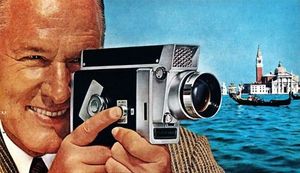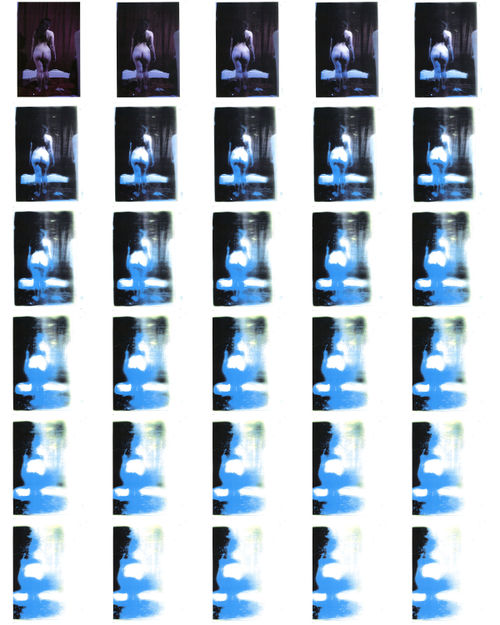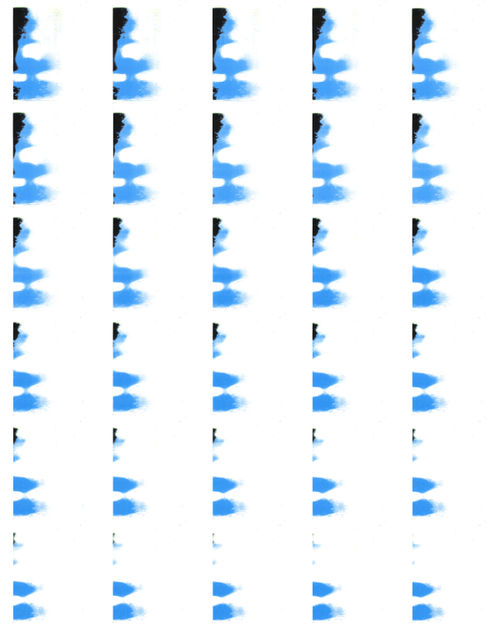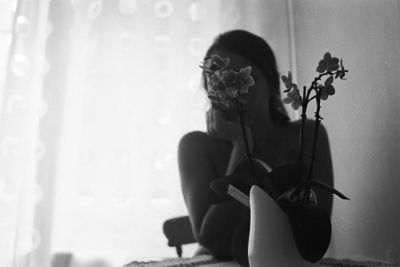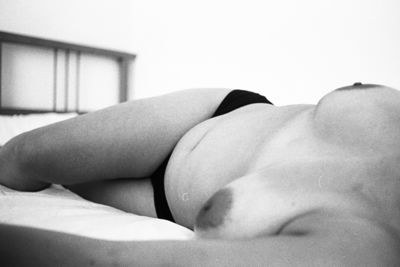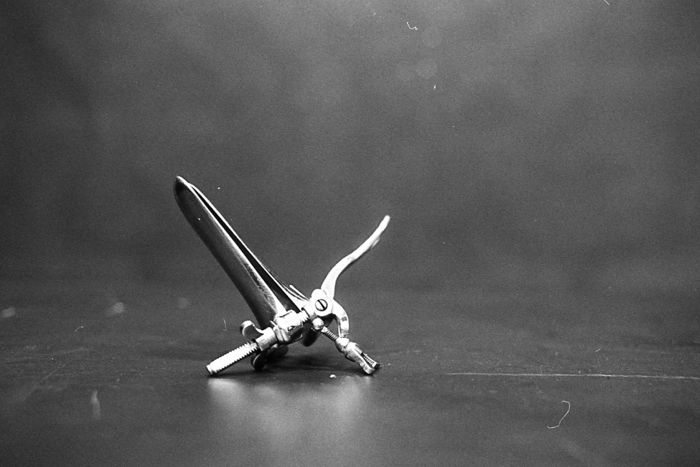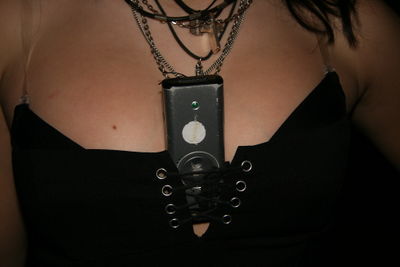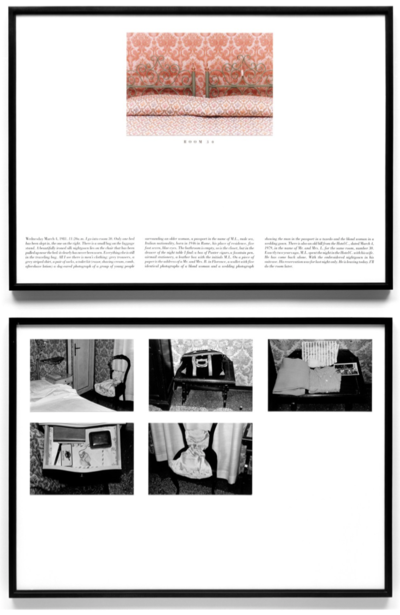User:Annalystad/secondyear/gratuateseminar/projectproposal/Finalproposal
Look, and forget about me
By Anna-Lena Lystad
What do you want to make?
I will make a photographic project using various photographic techniques exploring the theme of the private image in a public setting. I am explicitly looking for the contrast of private and public because I was a part of the generation that went from looking at images, to being looked at. You could clearly see the shift in camera advertising – how it went from pointing the lens at the world to pointing the lens at yourself in the world. Not something to keep and treasure, just something to share and move on from. I will be exploring techniques using both analogue and digital cameras, film, cyanotypes, photocopier and projectors to see how one can create images for private use and how they can be communicated in public space to discuss what role distribution and intimacy plays in this photographic era. The change from analogue to digital also changed peoples’ relationship with photographs drastically. Taking analogue images was an expensive activity, which resulted in people being selective with what they took pictures of and what they decided to print. When digital photography came, it was a lot cheaper and the number of images one could take changed the way one took pictures, you can delete and retake as many times as you wish and by that the selectivity of the analogue camera disappeared. When the camera became a part of a communication device, the phone, the shift from private and intimate to public and ephemeral was complete.
Figure 1: Tumblr
Figure 2: Petapixel
How do you plan to make it?
Within the next month, I will learn new techniques in the darkroom, such as pushing film and experiment with Cyanotypes. Jeroen de Wijs (Instructor WDKA) has chemicals I can buy and Karina (xPub) has experience and will help me with Cyanotypes. I have also formulated an email to the principal at my old Junior High School in Norway, I have photographed there before and I believe I have a good chance to make that happen again. Before shooting, I need a specific idea in mind of what I will photograph and how much time I need there along with possible props, equipment, and models. This particular experiment might be along the lines of projection, or bringing objects in to the space. I am also looking for a portable projector to rent or buy since the school only has a large projector I can’t take out of the building. I am also keeping a shoot diary, where I am documenting everything around the planning and shoots I conduct, in this diary I print out images, writ about the process and ideas, what worked and what went wrong. This helps me analyze where I started and to keep track of how the project is developing. Over the winter holiday I will be looking for objects to photograph, look through old personal archives. Before the end of this trimester I hope to have at least 3 experiments well under way. I am planning one experiment with a photocopier where I will print out one image, photocopy the image, photocopy the photocopy and so on, it will take the form of a grid with all the copies I can make till the image disappears. One other experiment I have underway is photographing a Vaginal Speculum - which is used by gynecologists to look into a woman’s cervix, and placing it in public spaces. Already – by photographic this clearly private and very specific object I have found that the object in itself is so private that it does not lend well to the idea of the private and public. This object is very female specific and many might cringe over seeing this object, which is not what I wanted. I am planning experiments based on the family album, and archival work – these are not yet developed. The family album plays a very important role as the basis of this project, because it does not exist today as it used to – one usually must go through publicly created apps or software which will do this automatically for you and you never touch a print. The physicality of the image is also another form I want to play around with. The end product might consist of multiple byproducts of the photographic image, such as photocopies, albums, projections and photographs.
Figure 3: Photocopy Experiment
Figure 4: Film Scan 1
Figure 5: Film Scan 2
Timetable
November/December
• Finish roll of film with Sigrun and Vaginal Speculum and develop.
• Experiment with pushing film and Cyanotype
• Brainstorming sessions with Karina and Sigrun
• Execute experiment with photocopier
• Contact Junior High School principal
• Projector test
• Assessment
January/February
• Use data from projector test and plan/shoot
• Develop and print images taken over the holidays
• Use projector to project private images in public spaces
• Create more experiments and shoots
• Interview people with exchange of private images
March/April
• Collect the experiments done and put them together to see how they relate
• Create album of data and images taken over the months for this project
• Invite people into a space where I will display some of the experiments, the people who want to come and see need to bring a private image which will be used in the project. This is because looking at private images require an equal sharing of images, no phones or cameras allowed in the space. This will also not exist online.
May/June
• Last shoots
• Finalize what the end result will look like, how/where to display
Figure 6: Vaginal Speculum
Why do you want to make it?
Today the distribution of photos is so excessive, the infrastructure underlying this distribution is so powerful and accessible, this project will look at the public nature of the photograph, the history of the shift of the camera merging with a communication device and why it is so important to keep some part of the photo a private medium. The photographic medium is very public because of social media and the sharing culture, I am not working to stop image sharing online rather to have some images which are important to you in physical form, away from the online judging setting, and something to value. I will be discussing what shaped my critical approach to images, how I was informed by the culture I grew up in. The core of this project is based on a personal experience with a private image, what happened once it went public, and how this has challenged the way I look at photographs. The story of how this project came to life is not special, it is one of the most common things that happens in today’s photographic society – the nude selfie, both a celebration of the body and a tragedy at the same time. At the age of 13-14, I sent a nude picture of myself to a boy and he sent one to me. We both knew what we were doing, and had equal trust in one another. This nude image of me spread like wildfire through MMS and was uploaded online to a social media site called Blink (which does not exist anymore). I don’t remember how I reacted or how I handled it other than feeling shame. I don’t remember much of that year at all. I want you to understand how this incident made me aware of the shift that happened one a private image went public. If this image was taken on an analogue camera – this would be a completely different story. During this period, around 2006/2007, the shift I previously mentioned happened, and the adolescents of that time were the first generation that had to adapt to this shift.
Figure 7: Personal Archival Image
Who can help you and how?
Continuous conversations with Simon, David and Ine is always helpful to get a different perspective of the analogue world and techniques that I can use in the darkroom. They give helpful references to other artists to look at or books to read. In general, discussions with tutors and peers, people with similar experiences and hear their thoughts and ideas. Reach out to Nora Mørk, a Norwegian handball player, who just last week had a private image of her go public. I’ve contacted the principal of my old Junior High School to let me photograph there again. My conversations with Karina and Sigrun are very helpful in developing the project further.
Relation to previous practice
• School Project – In this project I was exploring the concept of digital privacy and body. I was basing this project of off an experience of losing control over a private image to a public spectacle. I went back to the school where the nude image of me was distributed, to photograph the space that once alienated me through public display.
• Bodyscapes – Since I started photographing, I have always been drawn to the human body. I have photographed in a non-human way. I created beautiful landscapes that looked like they were from a different planet. With these photographs, I unintentionally made them into pretty objects one can stare at, putting on many layers of distortion to beautify it instead of depicting the body in a truthful way.
• Archive Project – For this project I dove into a forgotten archive of my late grandfather. This archive is a physical one, stored in the attic at my parents’ house in Norway. For me to get access to such a private family archive I had to use a public application to attain the digital images of the analogue archive.
Relation to larger context
My project is about privacy and intimacy in an accessible public world. We live in an online world, a world where the camera was turned into a communication device. Where images are no longer looked at 20 years later for personal memorabilia and to learn something about the world but rather to instantly share, instantly being looked at and forgotten. Sophie Calle is a huge influence for this project, she is a French writer, photographer and conceptual artist dealing with ideas around vulnerability, identity and intimacy. One of her projects called ‘Private Games’ in the 1970’s is exploring the concept of ‘public exposure of private experiences’ (Guggenheim Online Collection). She combined the intimate photographs of ‘Private Games’ with text written with some detachment. Like her, the importance of the private image and how that tells us something about our life is highly lost in today’s public world. Social media have promoted the use of the photo for self-promotion, creating a model that hooks people on sharing as much as possible about themselves. This ideology of “sharing is caring” and radical transparency has left little room for intimacy. In fact, intimate photos in this infrastructure of instant distribution on a massive scale place the photographer and/or subject in a very vulnerable position. In the age of online shaming, this project aims to fight to regain the much-needed intimate and private nature of the photograph.
Figure 8: Sophie Calle The Hotel, Room 30
References
Books
Mirzoeff, N. 2009. Visual Culture. 2nd ed. London: Routledge.
Bathes, R. 1993. Camera Lucida: reflections on photography. London: Vintage.
Cotton, C. 2009. The Photograph as Contemporary Art. London: Thames and Hudson.
Doy, G. 2004. Picturing the Self: Changing Views on the Subject in Visual Culture. London: I. B. Tauris.
Spence, J. 1988. Family snaps: the Meaning of Domestic Photography. London: Vigaro Press.
Sontag, S. 2008. On Photography. London: Penguin Books.
Web
https://www.guggenheim.org/artwork/artist/sophie-calle, (accessed 23 November 2017)
https://petapixel.com/2013/06/25/new-canon-ad-campaign-takes-a-swing-at-smartphone-photography/ , (accessed 23 November 2017)
https://www.tumblr.com/search/kodak%20advertising , (accessed 23 November 2017)
https://www.guggenheim.org/artwork/10439 , (accessed 24 November)
Artist to research
Nan Goldin
Sophie Calle
Duane Michaels
Maya Deren
Allan Sekula

